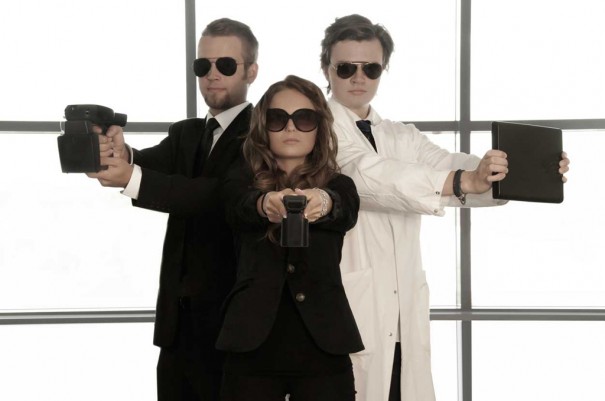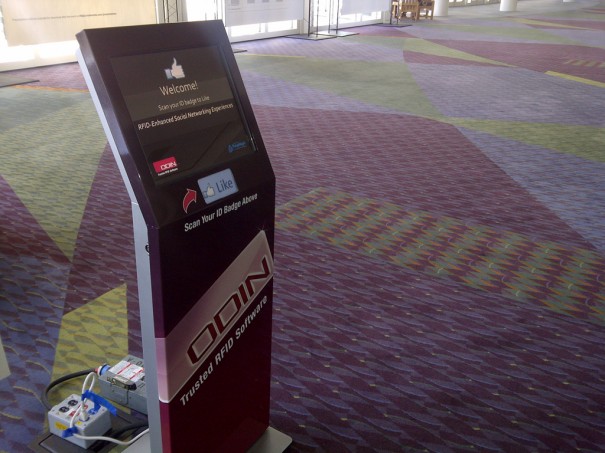RFID: the technology that is changing the world
Isabel Echevarria, Director of Institutional Relations of the José Manuel Entrecanales Foundation, addresses in this article the significant increase in the fields of application of RFID technology, that allows users to have reliable and updated information in real time of the records, effective asset management, the immediate location of the files or the control and monitoring of the quality of the services.
Radio frequency identification technology, known by its acronym in English RFID (Radio Frequency Identification Device) is a system that, although it has already been used for years (In fact, was first used in World War II to identify friendly aircraft) it is currently when it is taking greater relevance. Thanks to the current technological development and the decrease in the prices of electronic components, this science is being oriented towards sectors such as logistics or supply chains.
In an RFID system the element to be identified; that can be an object, animal or person, is labeled with a small chip that is attached to a radio frequency antenna so that it can communicate and identify itself, via radio frequency waves by a transmitter/receiver device. What makes this system more valuable than any other used for this purpose, is that the rfid chip allows to store identification information that gives each of the labeled elements a unique character.
And this, speaking clearly, How can it improve our lives??
The truth is that the uses are almost infinite. Some companies have already begun to squeeze the potential of RFID codes in the postal sectors, librarian, health, railway, safety and industrial. The day-to-day life of society will change as this technology continues to be installed in places where citizens spend much of their time.
In Spain, we are pioneers in the development of this technology. In the health sector, For example, it is already quite implanted. Used, among other things, for the identification and traceability of patients and assets within the health field, this means higher quality assistance and increased security levels, providing benefits such as patient identification using RFID codes, a record of how long someone has gone unattended, better access to the Digital Medical Record, location of patients, reduction of errors in the administration of medicines...
Asset localization makes it possible, In addition, have a complete information of the most important stocks of a hospital plant through a visibility software. this, in addition to welfare benefits, provides economic benefits as it reduces equipment loss and theft, decreases machine search time... This technology allows, In addition, monitor temperatures. This ensures that samples, Vaccines, Organs, drugs, blood bags, Drugs... are always at the right temperature. The devices allow you to program alerts in case temperatures exceed the authorized limits and all this without the need for manual data collection, as it registers in real time via Wi-Fi.
The postal sector has been another beneficiary in the implementation of RFID technology. Solutions already in use provide transparency and reliability in logistics operations information, allowing an optimization of resources and greater efficiency in processes.
Future projects
One of the utilities that are already taken advantage of this science, and that they will probably be incorporated little by little in all shops, is its use as an anti-theft system. What has been done is to create an anti-theft RFID carpet. Each garment has an identification tag that at the time of purchase is deactivated. If someone tries to take a garment without having paid at the checkout, when it passes over the carpet at the exit, the system detects the tags not deactivated and makes an alarm go off. All without the need for security arches or the traditional alarms that, with a simple pull, can be torn off.
Another of the uses that some stores are already giving to this technology is what is called "RFID Smart Tester". Thanks to this system, when a customer enters one of these fitting rooms, a reader built into clothing recognizes labels and a touchscreen, located in the same place, emits images with specifications of the garments and, In addition, suggests accessories and accessories that match the part. The customer can search for different colors, Sizes, models... and get all the information you need about the product: prices, Discounts, Offers... it is likely that in the near future all businesses will have one of these useful testers.
Other utilities
Smart shelves have already been installed in bookstores and libraries. The only thing that is needed is to place some mats on the shelves of the cabinets that allow you to know, at all times, the copies they have on them. Ago, in short, a real map of the library. These are just a few examples of how we can take advantage of this technology, which can also be used for inventory, as a payment station, to tag massively...
In recent years RFID technology has been developed and perfected by having, even, of internationally accepted standards and of the acceptance of public administrations, responsible for the allocation of frequencies who have already understood that resources must be compatible for this technology to be used internationally.
The use of RFID allows, in short, easily and quickly distinguish the type, quantity and variety of items available. This solution represents a series of benefits among which the ability to have reliable and updated information in real time of the records stand out., effective asset management, the immediate location of the files or the control and monitoring of the quality of the services. A technology that, in short, will facilitate our day to day and increase security and reliability in stores, Shops, storage, industry...
Isabel Echevarria Aburto
Director of Institutional Relations of the José Manuel Entrecanales Foundation
You liked this article?
Subscribe to our RSS feed And you won't miss anything.





